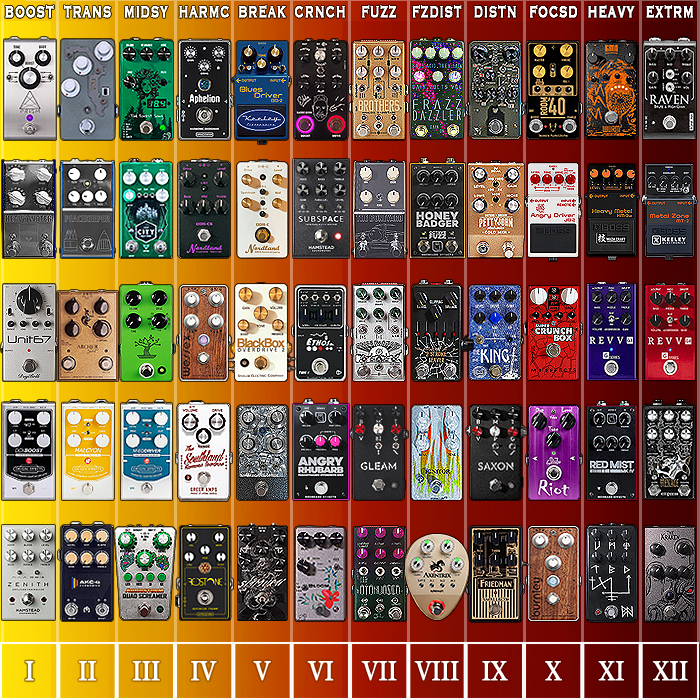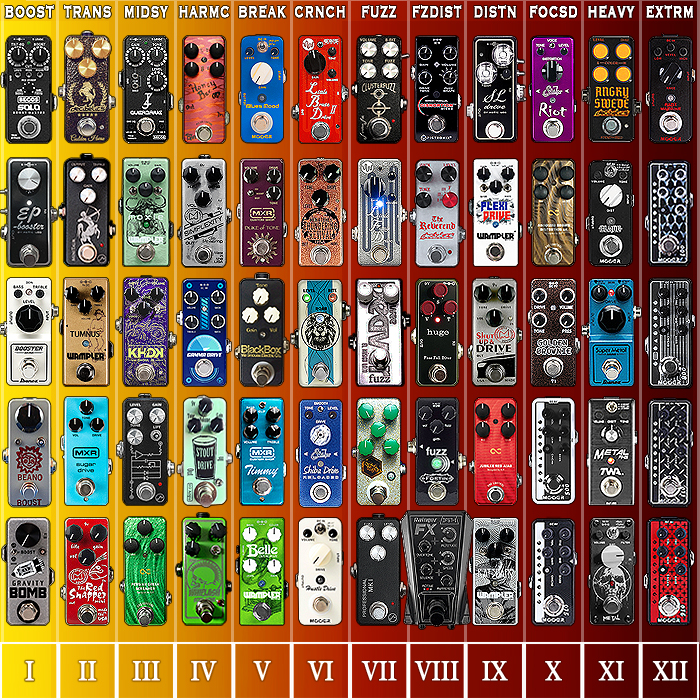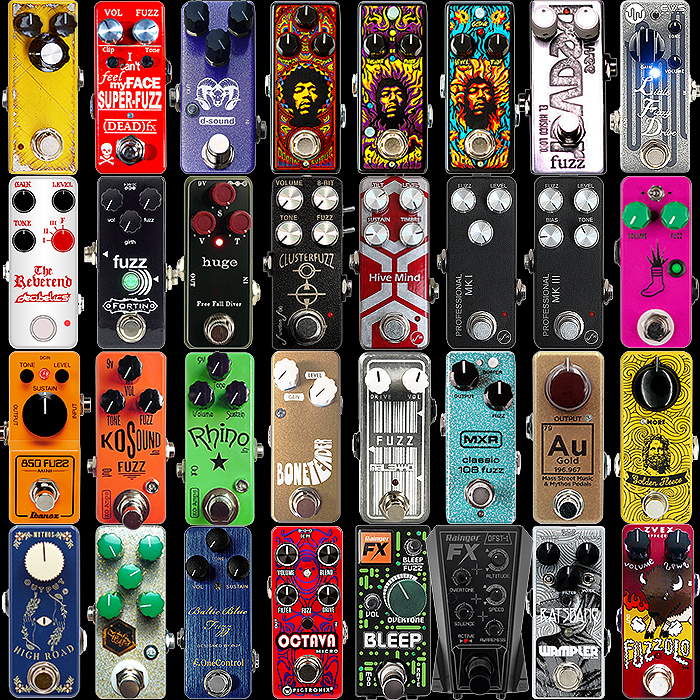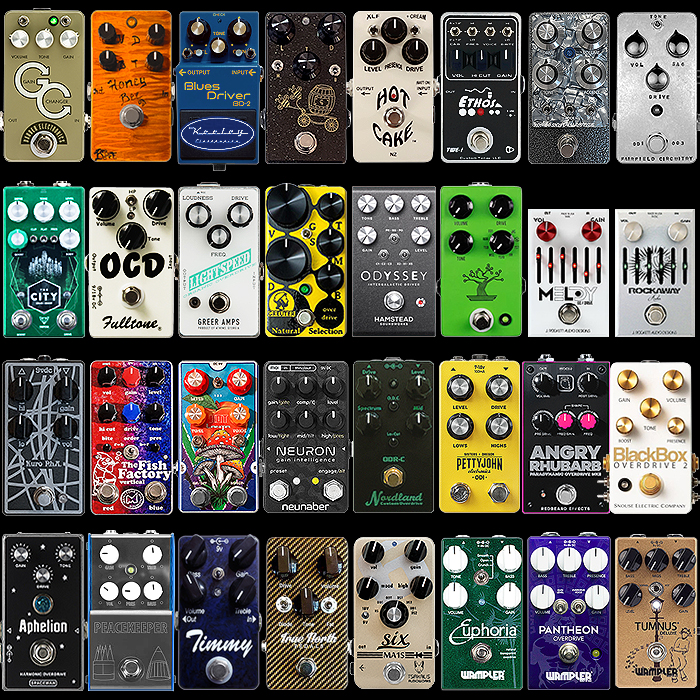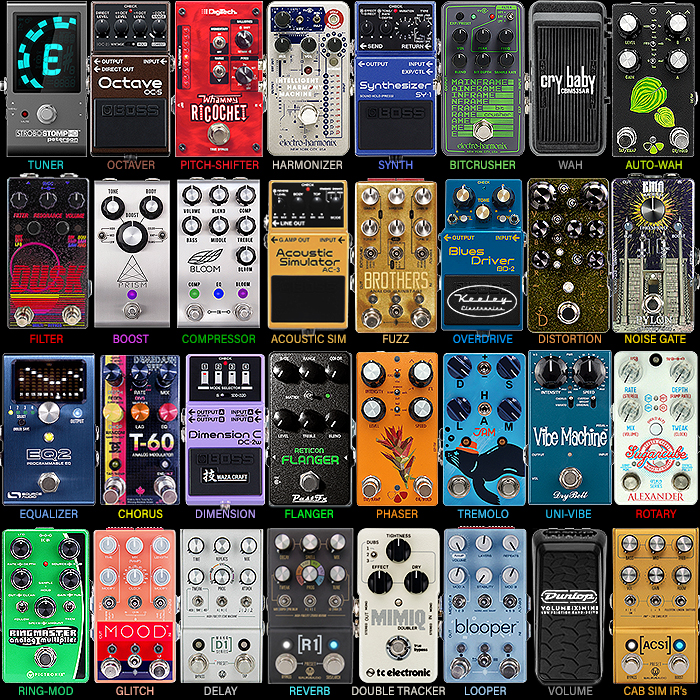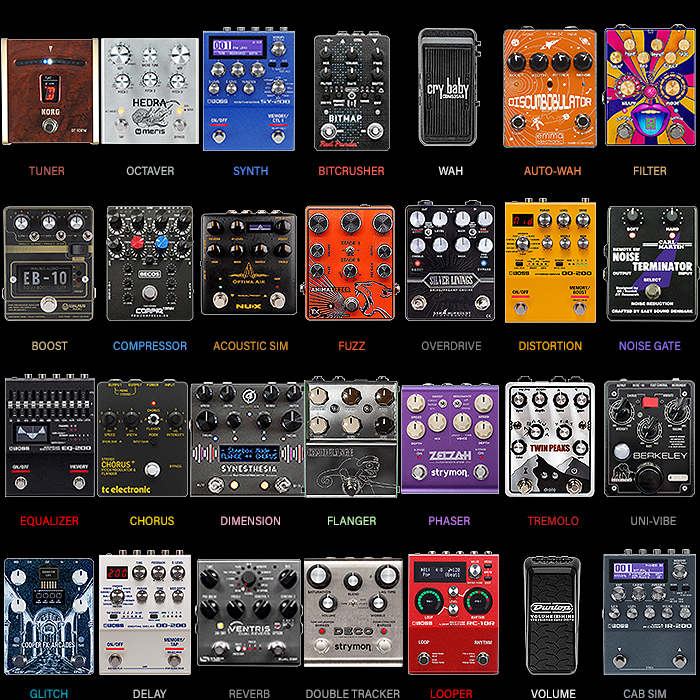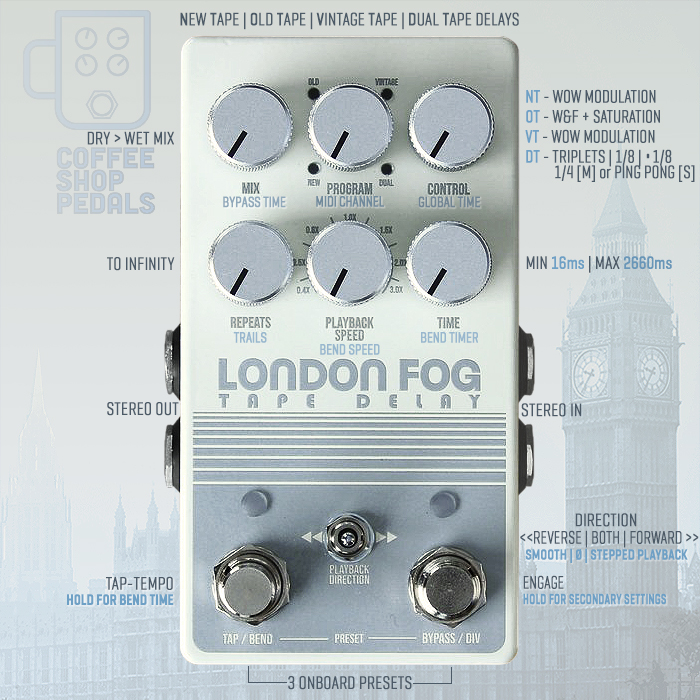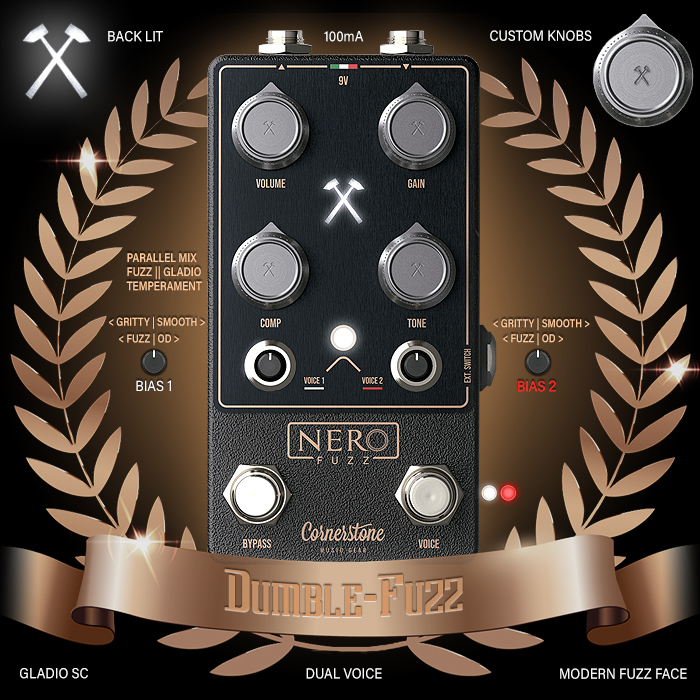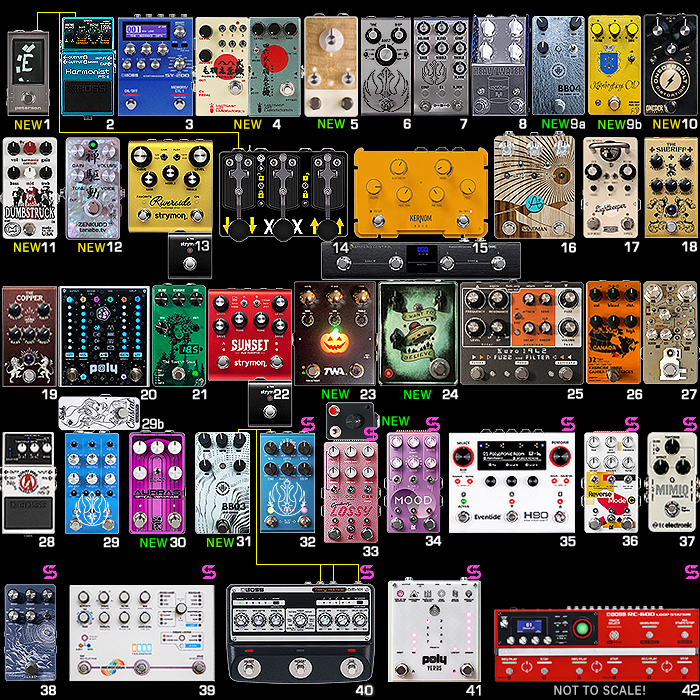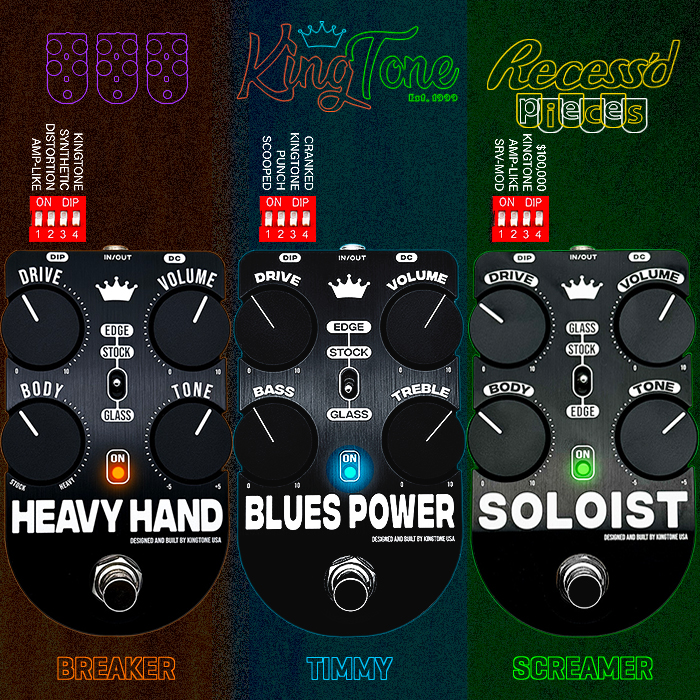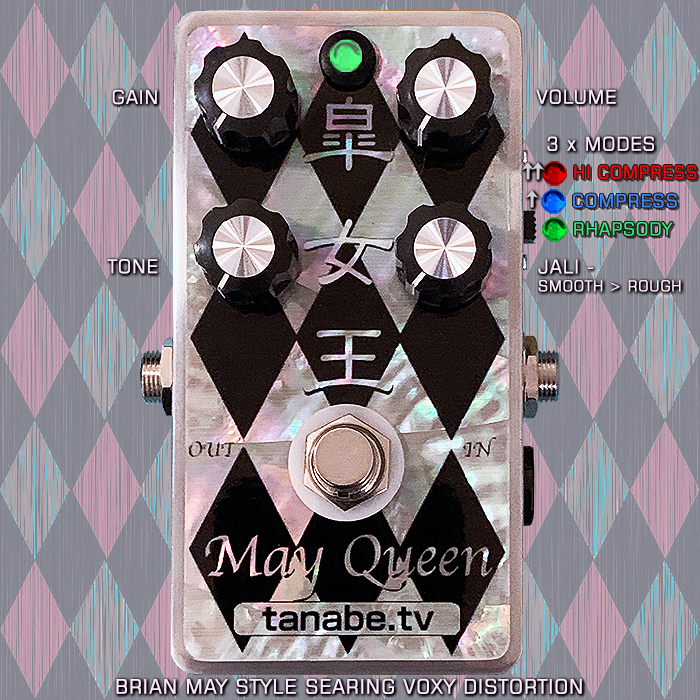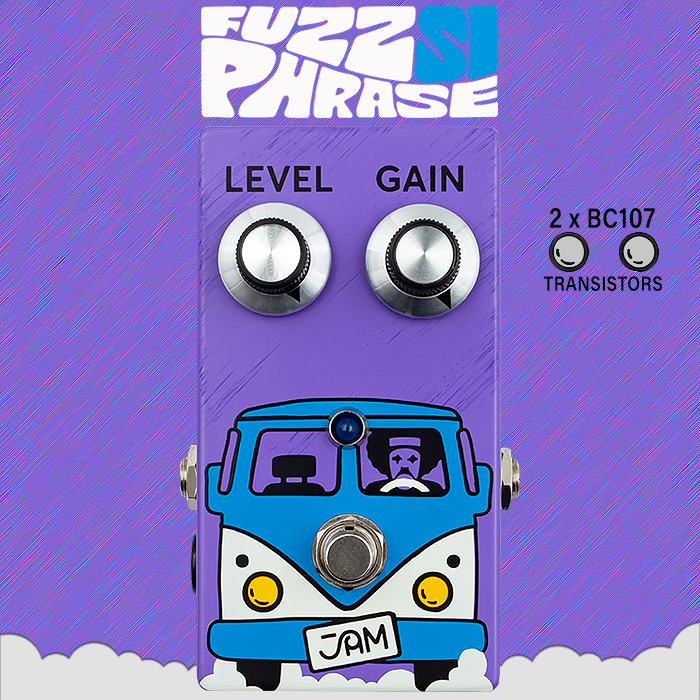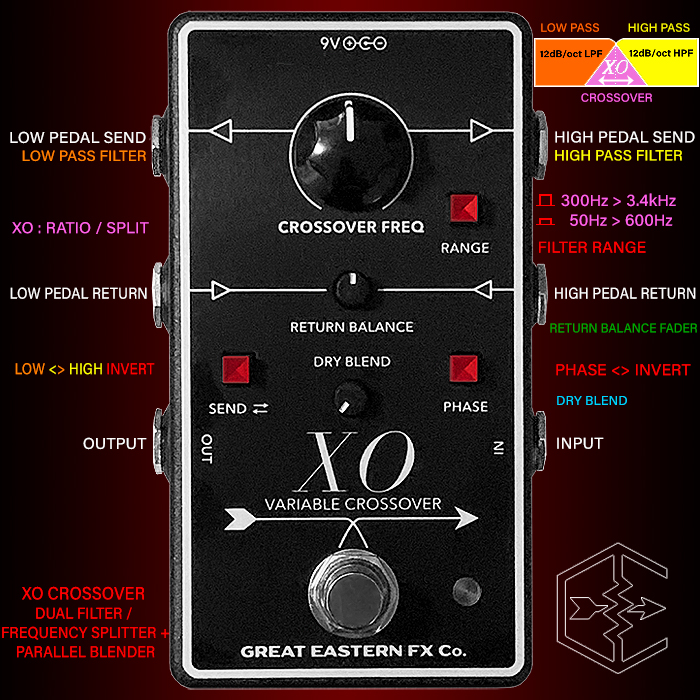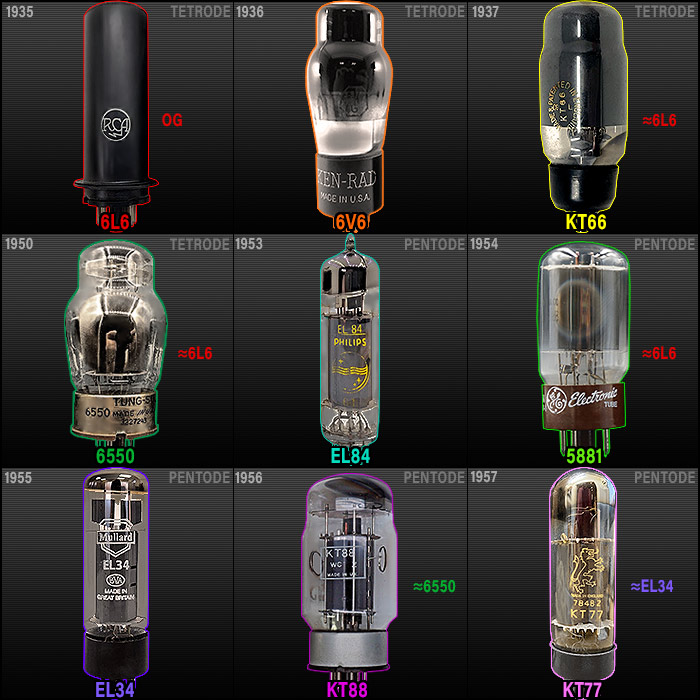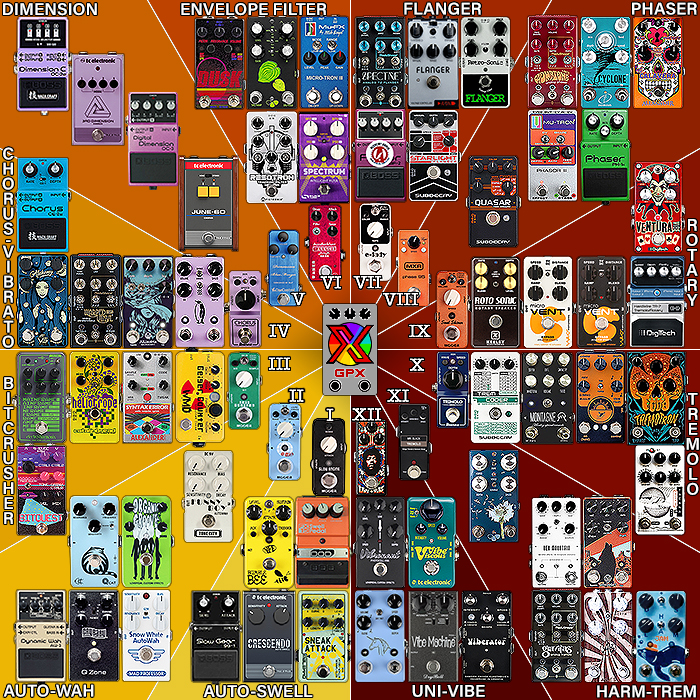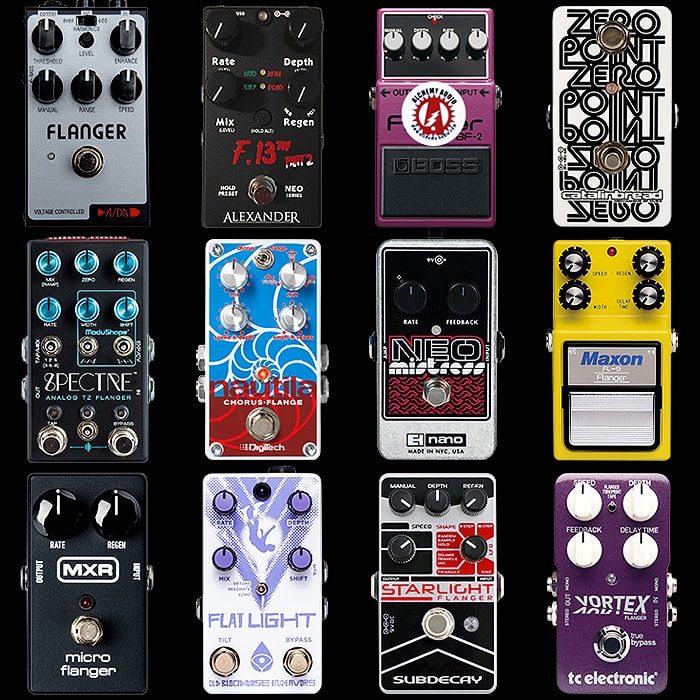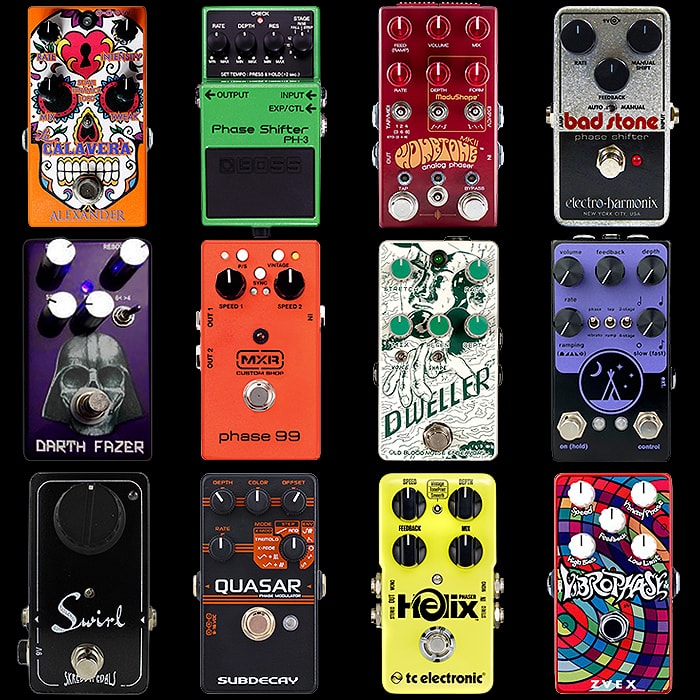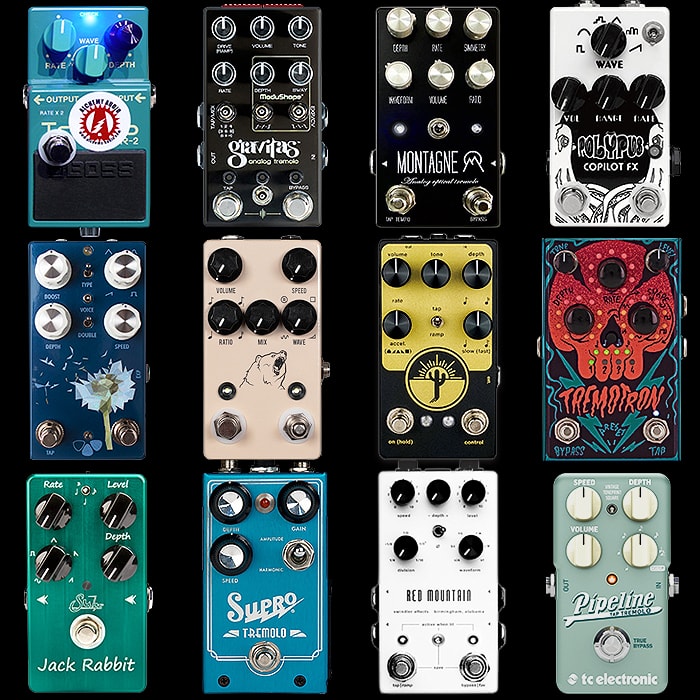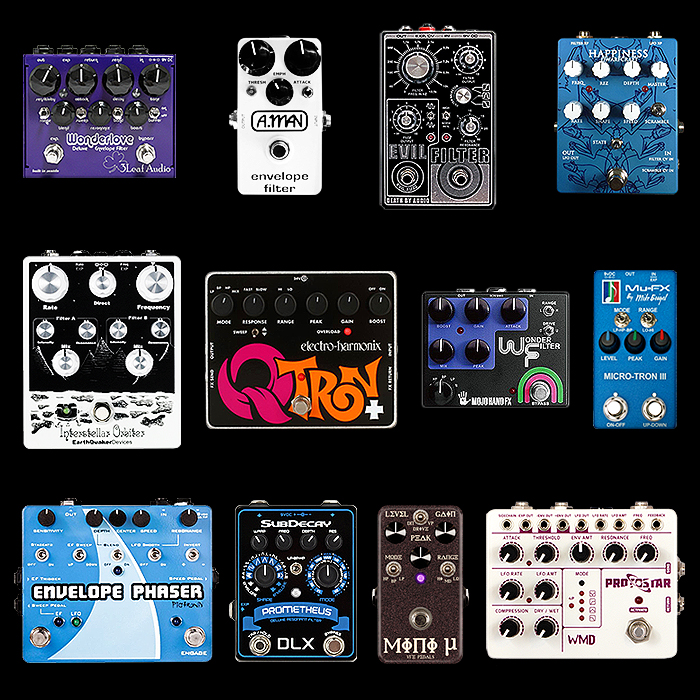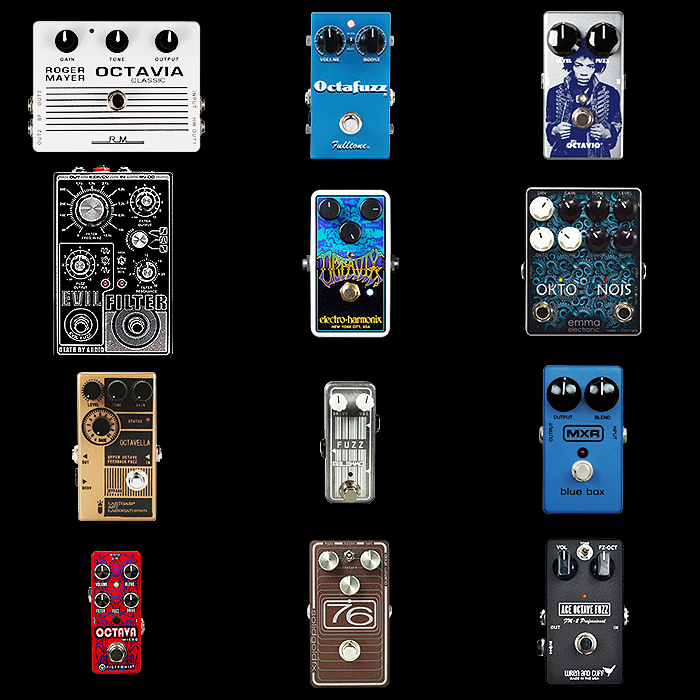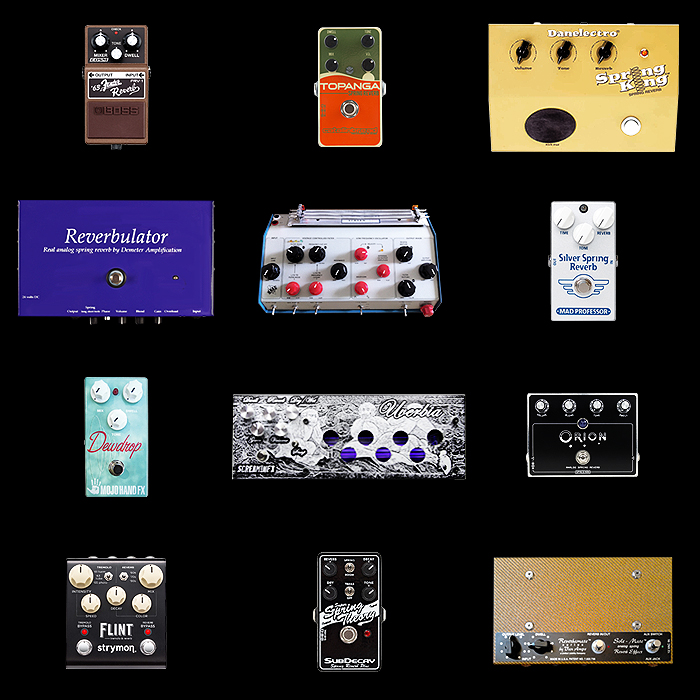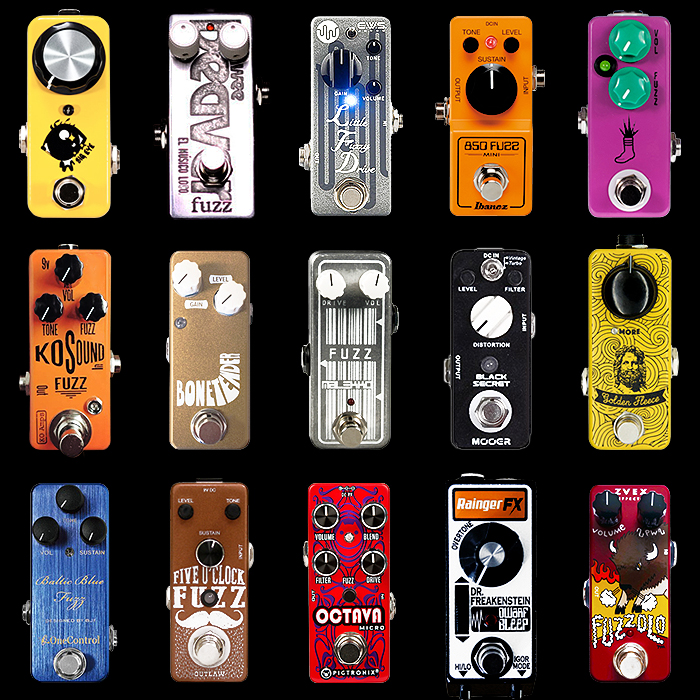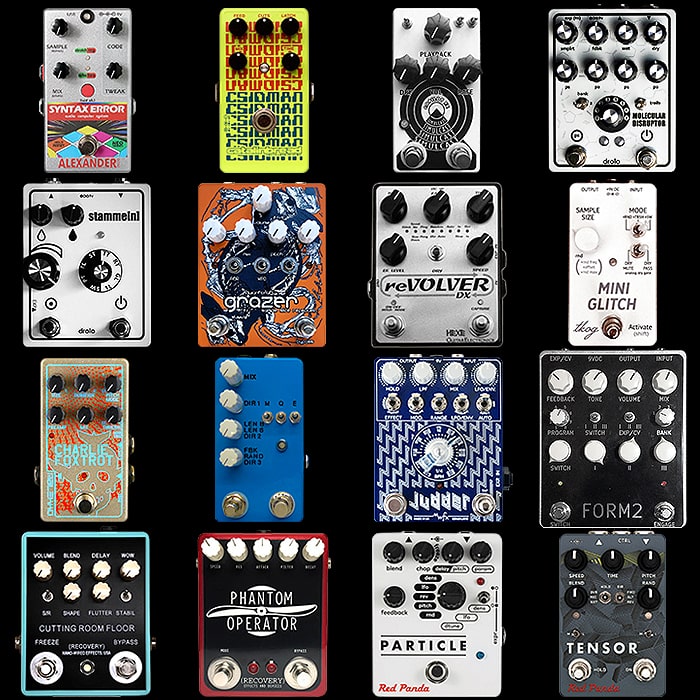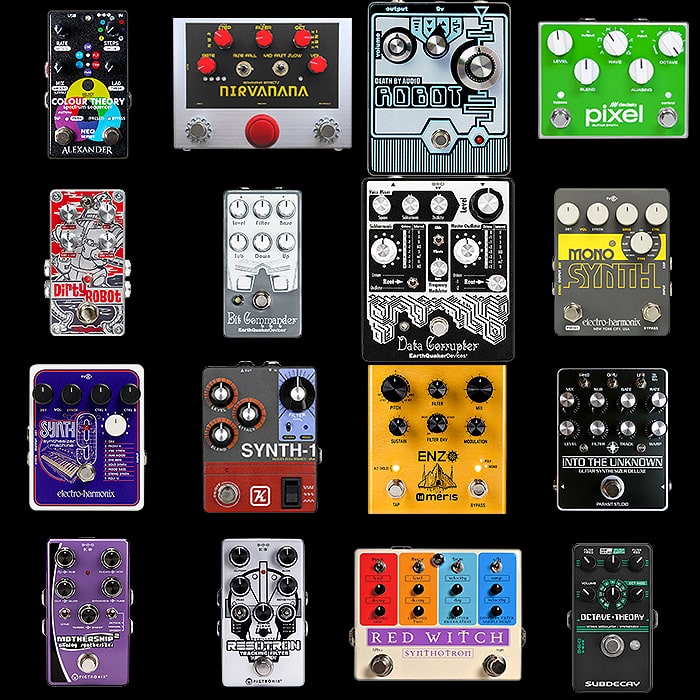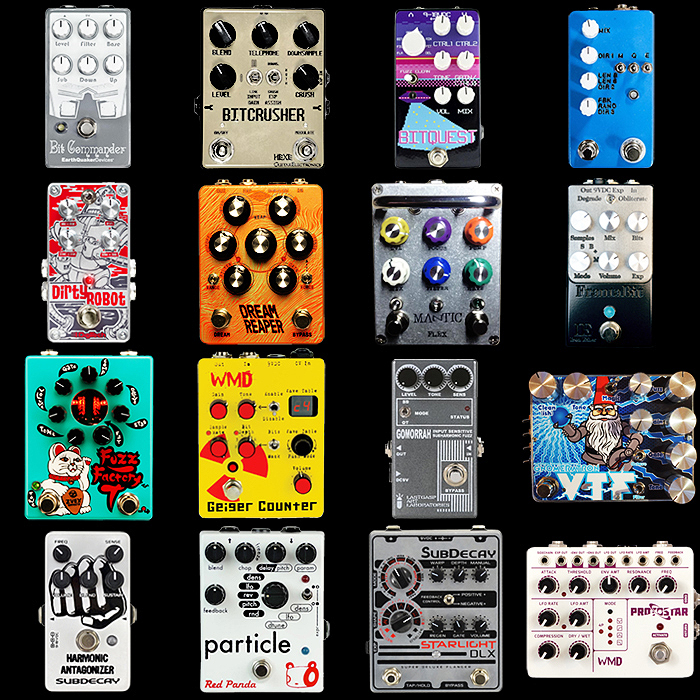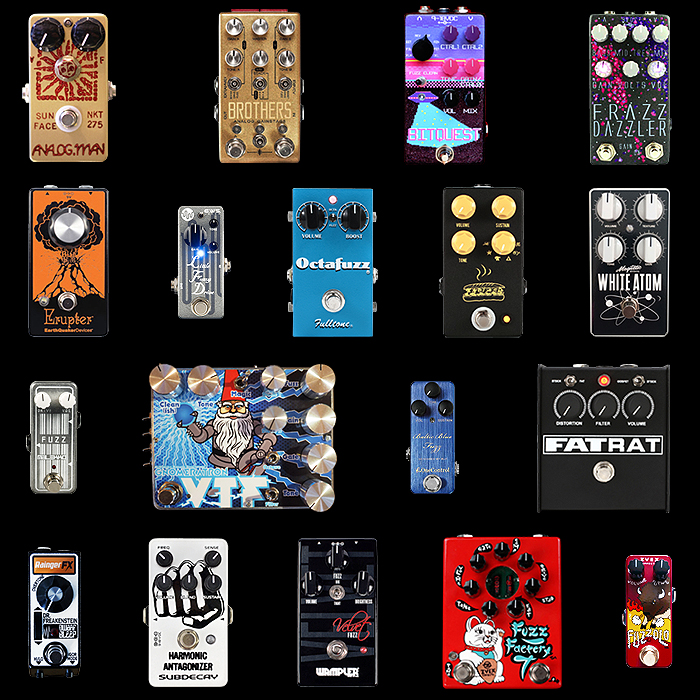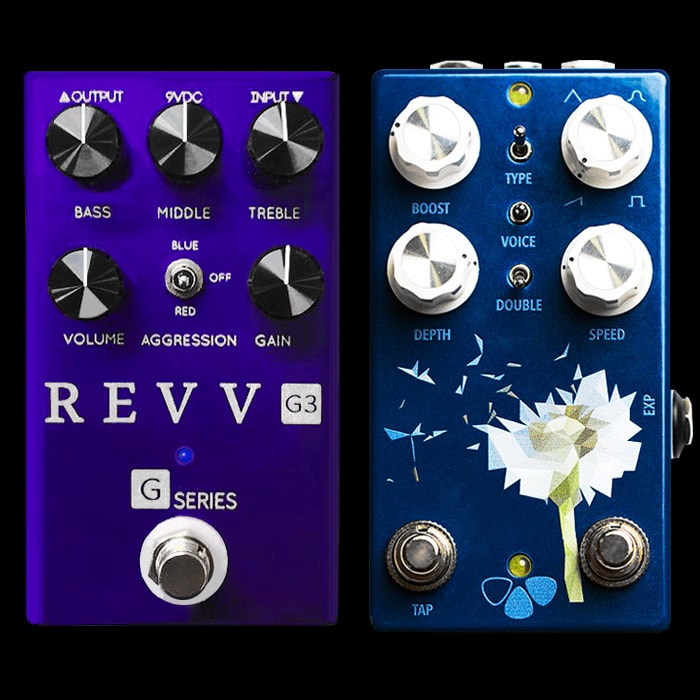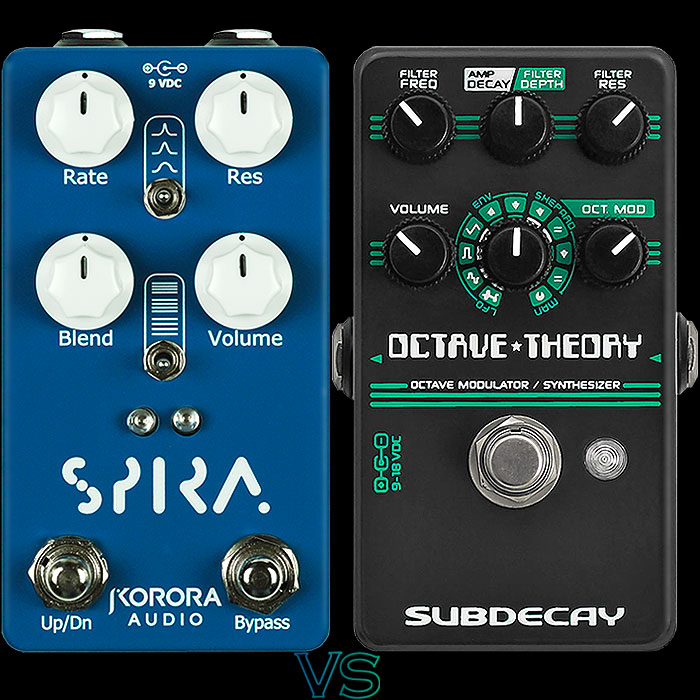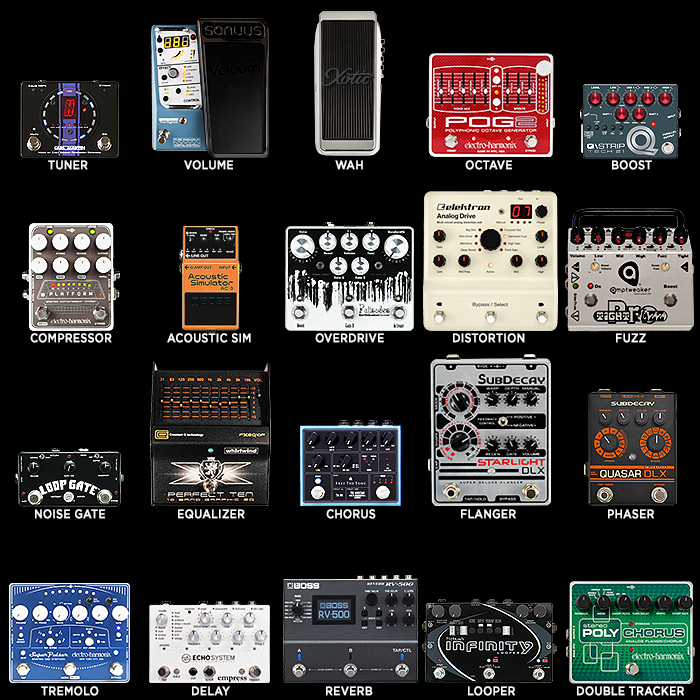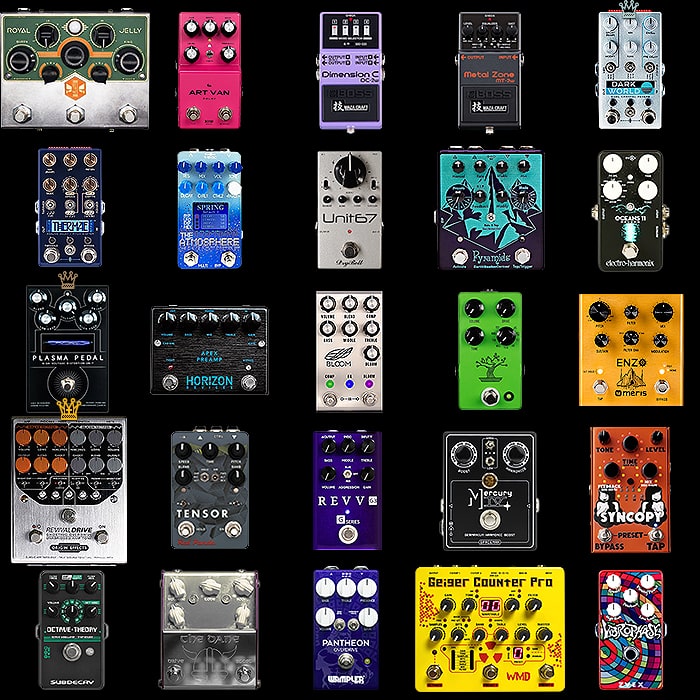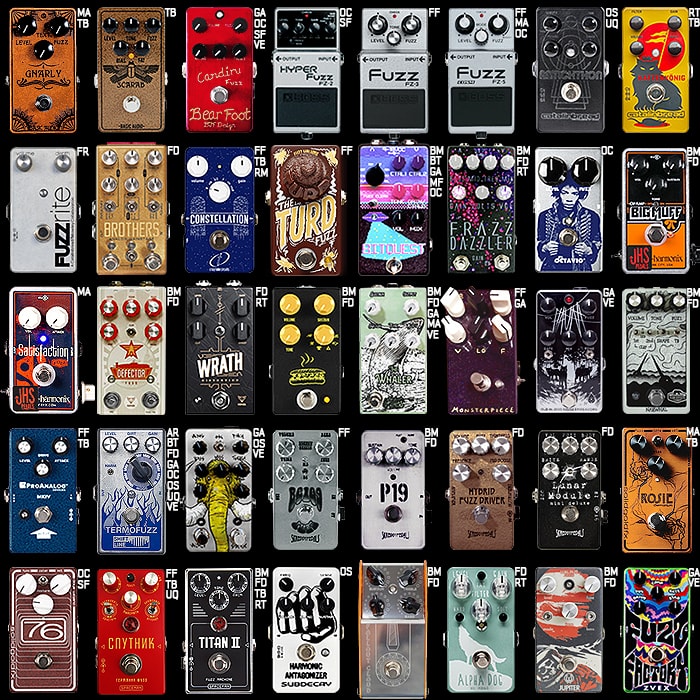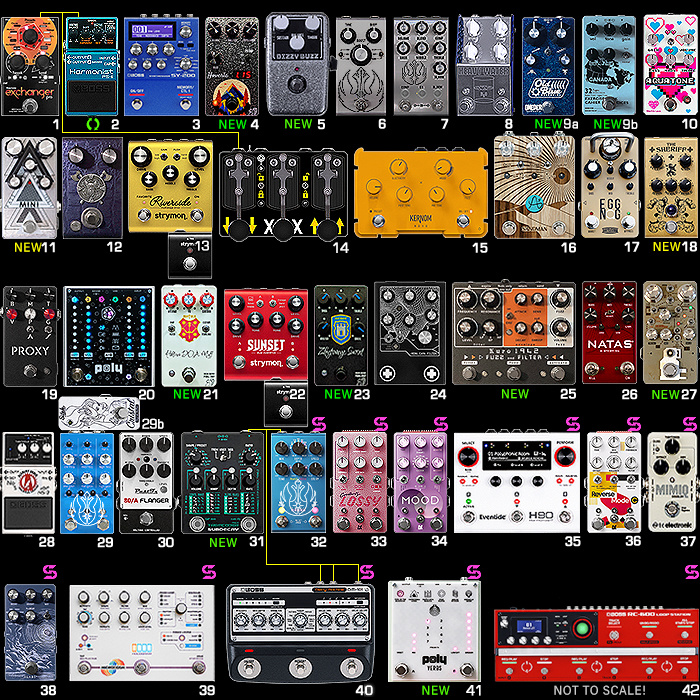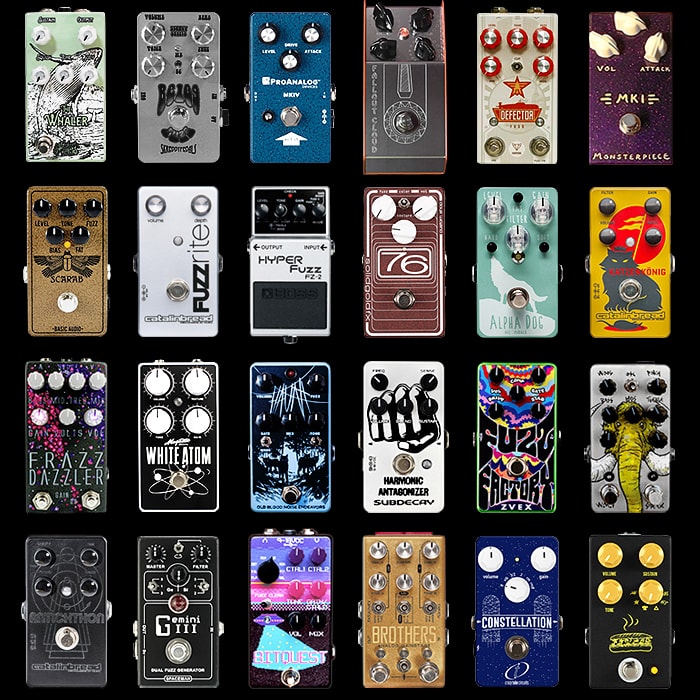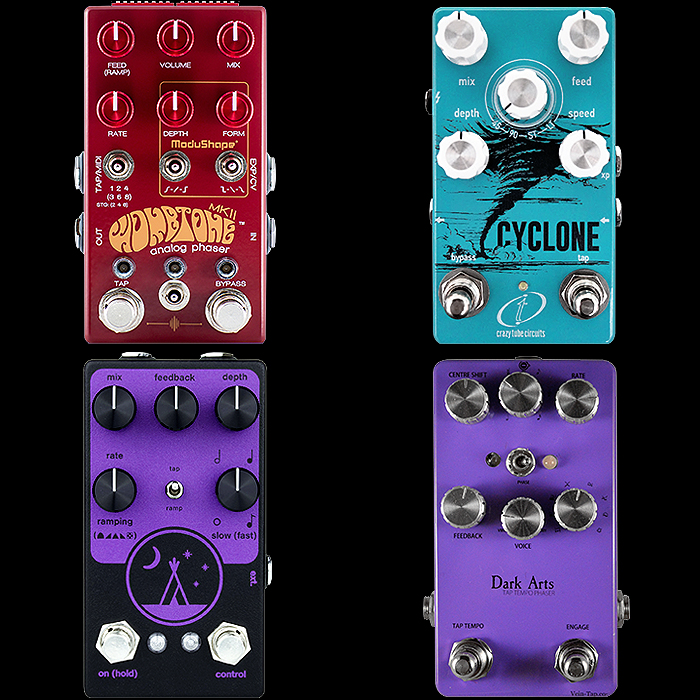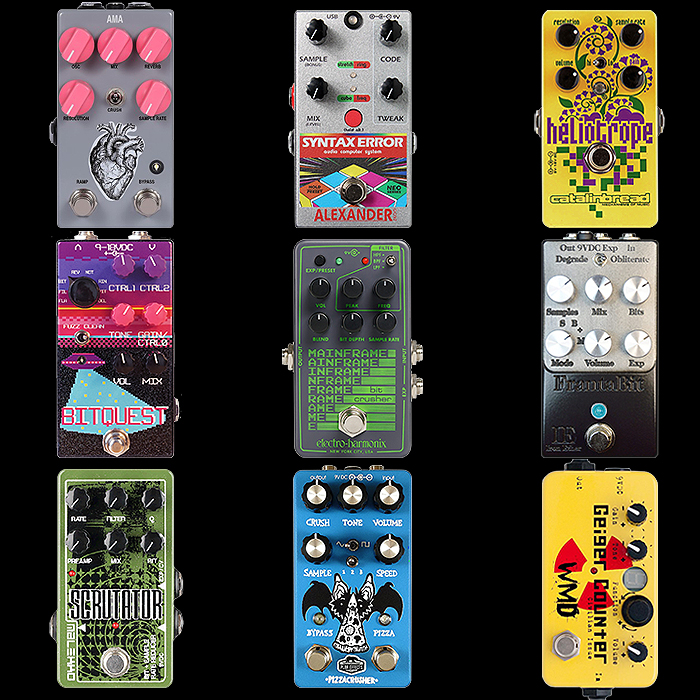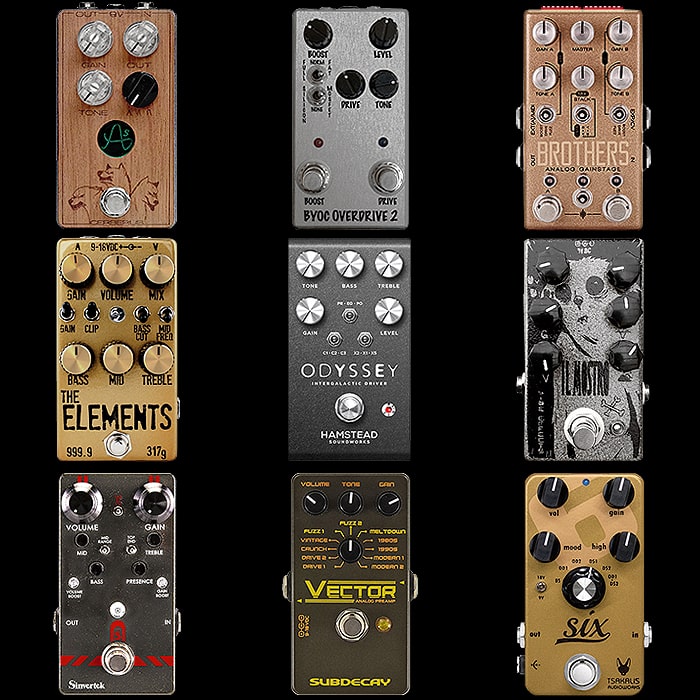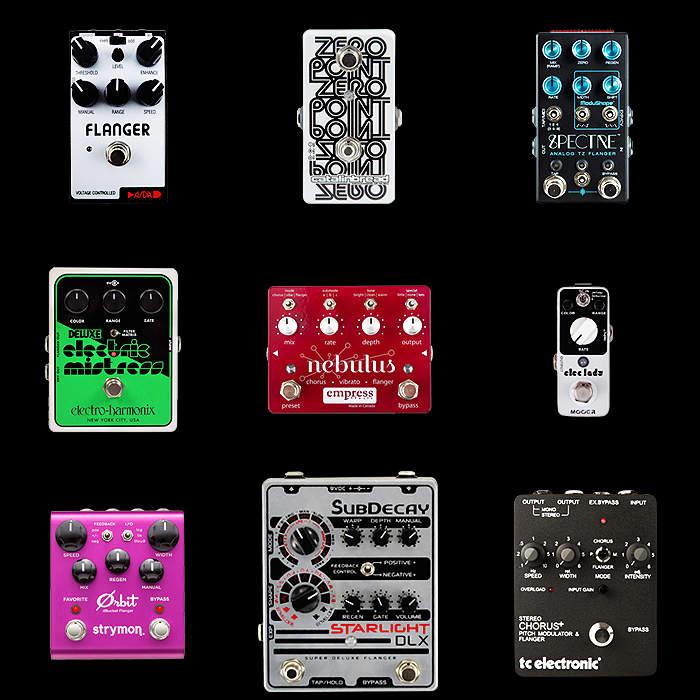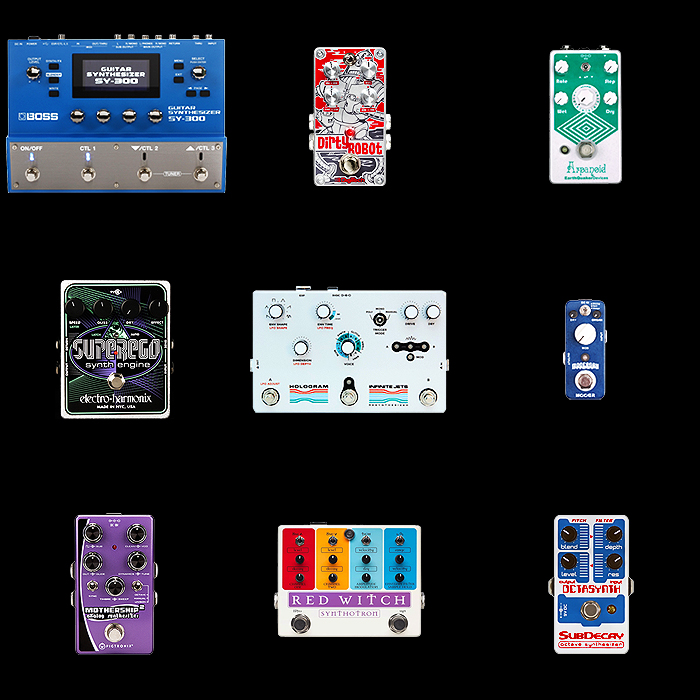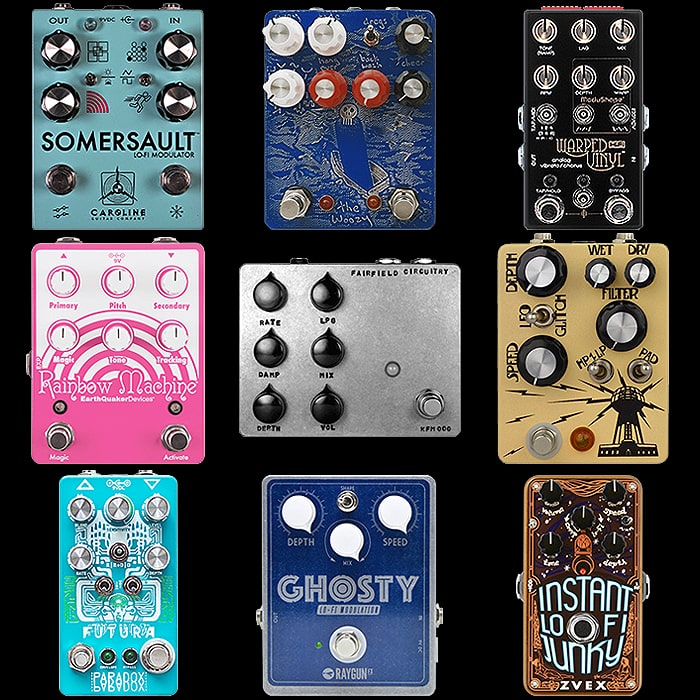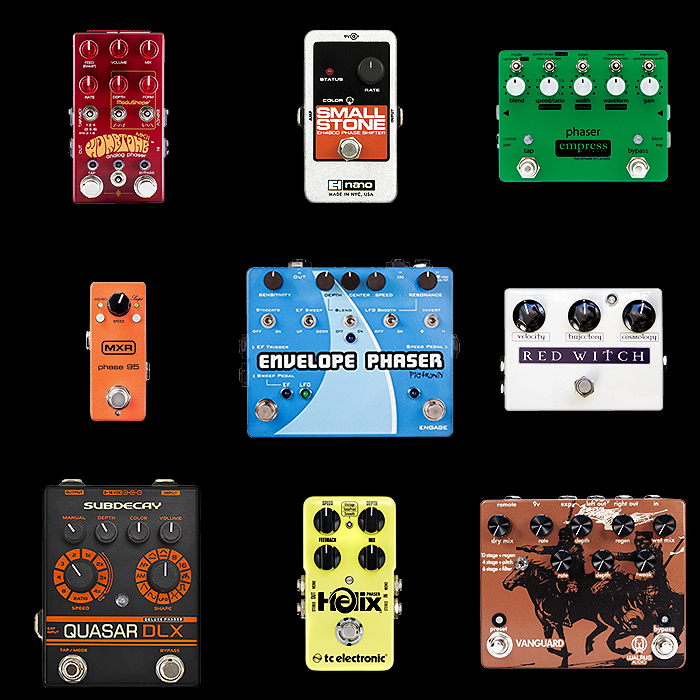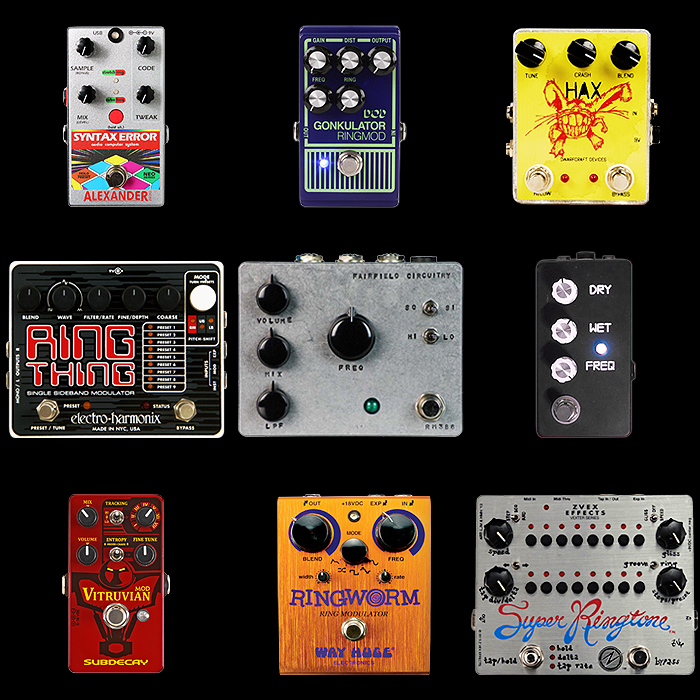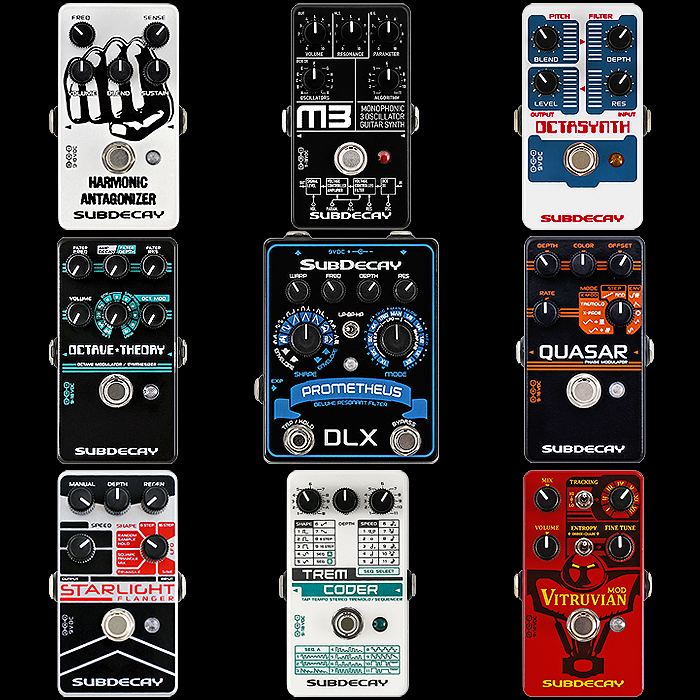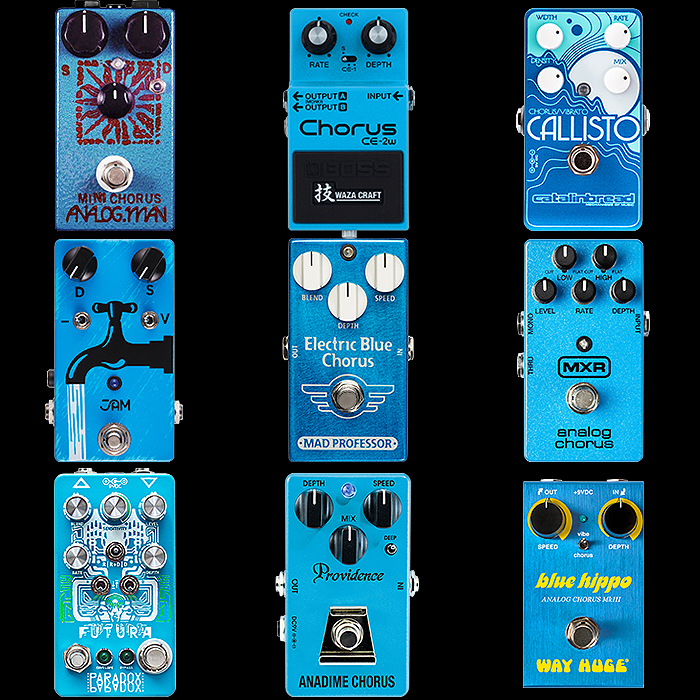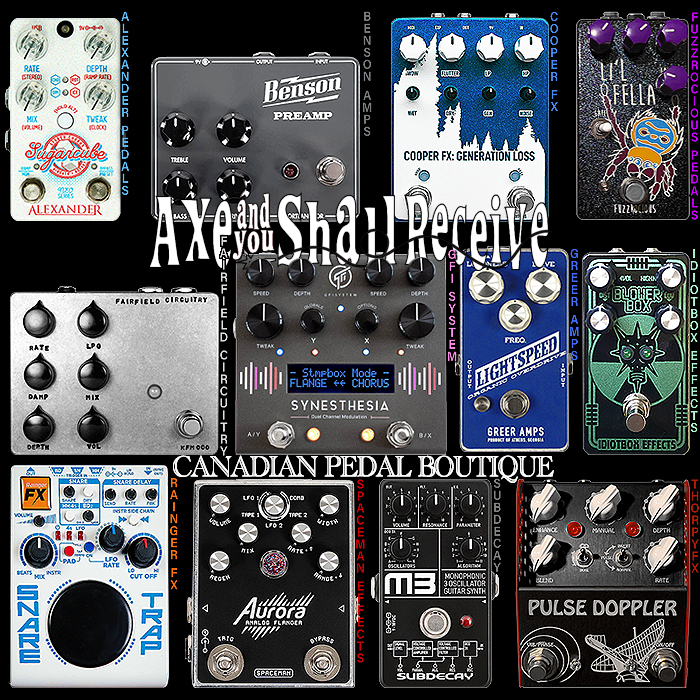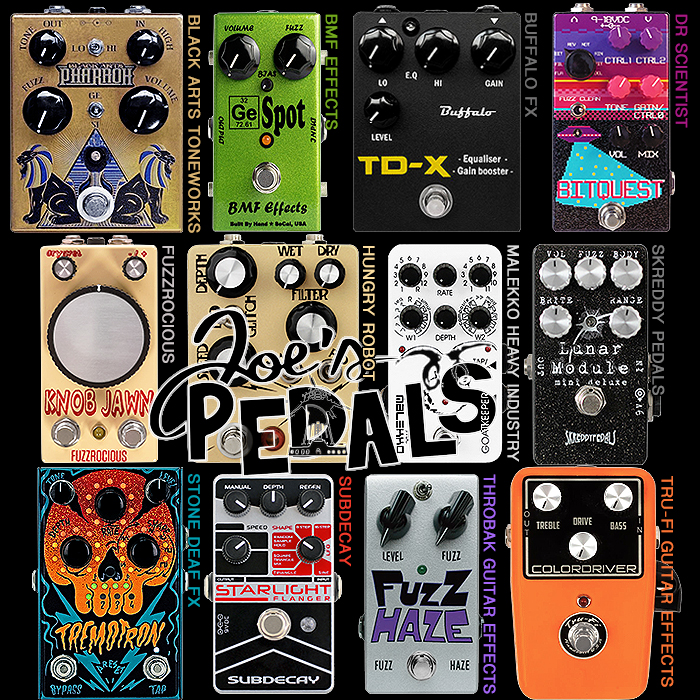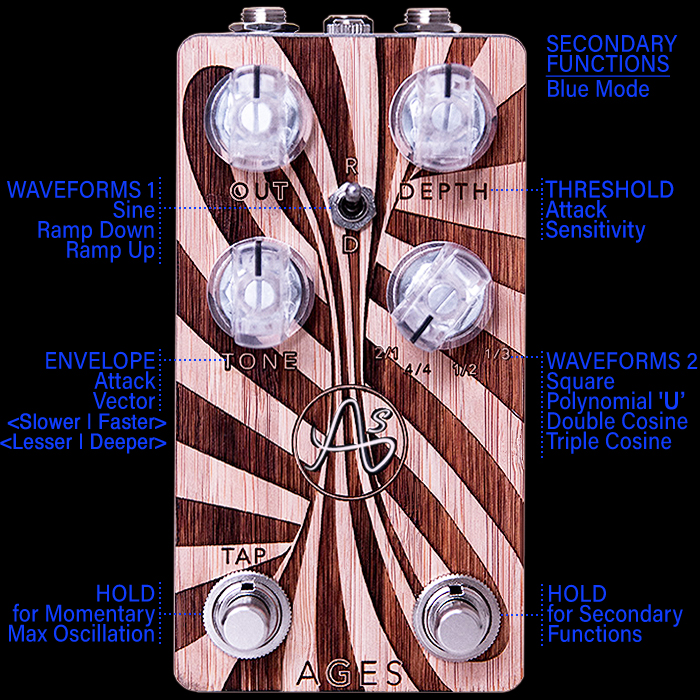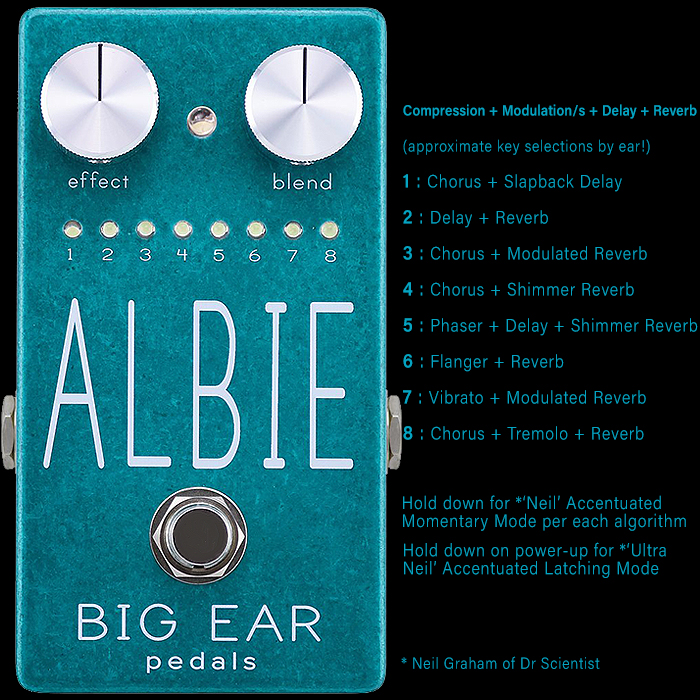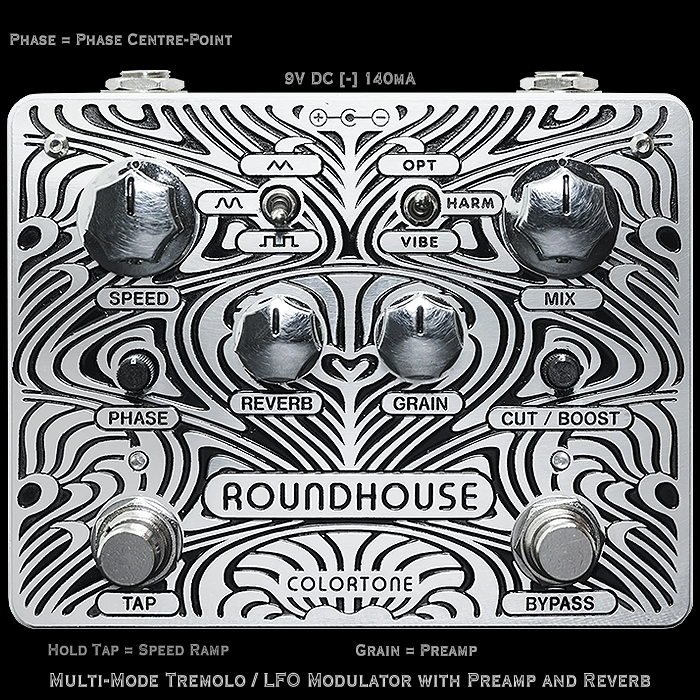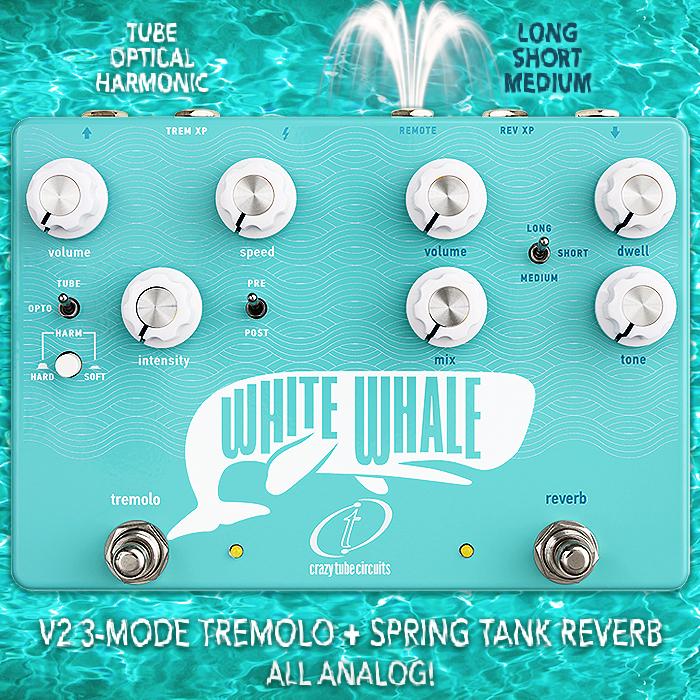2 Polyrhythmic Pattern Tremolos - Malekko Goatkeeper vs Subdecay TremCoder
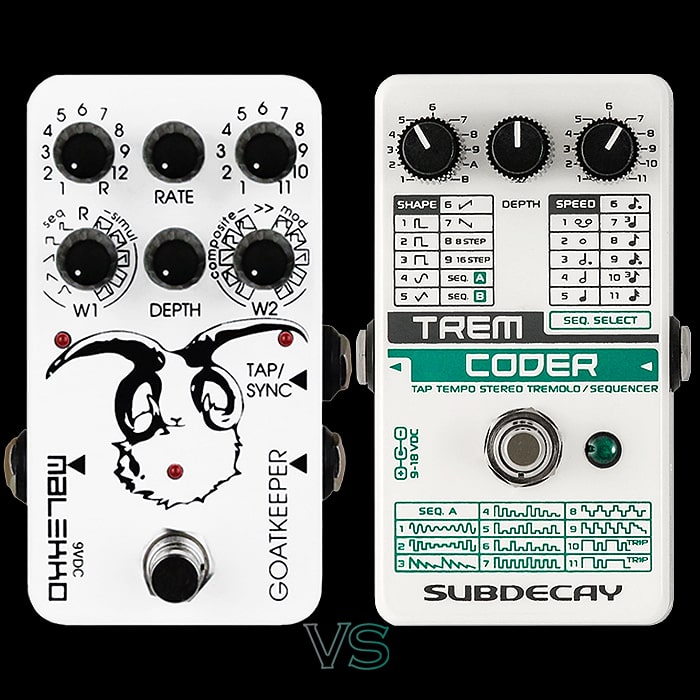
I had been trying to find an angle on on the very new Subdecay TremCoder when the even newer compact Malekko Goatkeeper arrived on the scene. These are certainly not exactly the same kind of thing - but they both offer a variety of Tremolo Wave Shapes and Patterns - which give your playing style very interesting textural and rhythmic possibilities.
At the basic level these are quite different technologies with the Malekko being analog while the Subdecay seems to be digital to some degree. The TremCoder also has onboard tap-tempo - which I find indispensable for such an effect, while for the Goatkeeper you need to deploy an external switch.
However, the Goatkeeper does allow you to run its 2 tremolo stages in 3 different ways - Sequential, Composite and Modulated - where one stage modulates the other, while via TRS Y-splitter cable you can output from the TremCoder in Stereo Panning mode. So there are certainly superficial similarities - but one pedal is somewhat more linear in its approach while the other offers a more blended solution - both of these have an enormous degree of permutations though.
The Goatkeeper has 2 Tremolo stages each with 11 different Multipliers and 10 Waveform combinations - alongside Rate and Depth controls. The TremCoder has 9 LFO Shapes and 22 x 32 Step Pattern Sequence Presets with Depth control - and that smart single footswitch tap-tempo q.v.
There’s a huge degree of versatility in both these offerings and each brings with it a certain amount of joy. I’ve kind of decided already which of these two I likely prefer - but it’s a close-run affair and I will reserve my judgment until the end. I feel both of these are really worthy of acquisition - but one possibly fits in better with my own preferences and playing style!
Malekko Goatkeeper 2-Stage Sequential / Polyrhythmic Analog Tremolo - £217
The Malekko Goatkeeper is a completely redesigned miniaturised / compact version of the Lightfoot Labs Goatkeeper first release in 2017. It consists of 2 different VCA / oscillation or Tremolo stages - each with its 11 different Multiplier options and 10 Wave Shapes or Patterns - in two banks of 5.
Besides the 4 options dials you have the classic Tremolo Rate and Depth controls, while you need to resort to a separate external switch for tap-tempo capabilities. Beyond the many pattern / multiplier options on offer the cleverness of the pedal is in how those 2 tremolo stages interact - via 3 different operational modes:
3 MODES :
- Sequential: The two stages are run one after the other
- Composite: The two stages are run simultaneously and the effective waveform is a polyrhythmic composite of the two
- Modulation: The two stages are run simultaneously and the effective waveform is the equivalent of one modulating the other
FEATURES :
- 2-stage LFO with Sequential, Composite, and Modulation modes
- LFO modes create sounds from simple to complex polyrhythms
- Stage 1 multipliers: 1, 2, 3, 4, 5, 6, 7, 8, 9, 12, Random
- Stage 2 multipliers: 1, 2, 3, 4, 5, 6, 7, 8, 9, 10, 11
- Waveforms set individually on each stage
- Sine, square, pulse, long square, ramp up, ramp down waveforms available
- Randomize waveforms on Stage 1
- Rate and Depth controls
- All analog signal path using THAT Corp VCA
- Large analog headroom
- LEDs show waveform intensity of each stage
- Relay true bypass with LED indicator
- Detented knobs for quick and accurate settings
- Tap tempo via Malekko Lil’ Buddy or sync with external metronome/clock
With the Random setting on the first Stage there is all manner of glitch potential with this pedal too which leads in many aspects vs the Subdecay TremCoder, but loses out in not having onboard tap-tempo or stereo output. I still find this to be a really great creative tool, and it definitely goes on the wishlist as a really interesting Tremolo option!
Subdecay TremCoder Stereo Panning Digital Tremolo / Sequencer - £179
The control topology of the TremCoder at first hand appears to be a lot simpler than the Goatkeeper, but it does conceal some degree of intricacy itself. You have just 3 control knobs here - Shape, Depth and Speed - with the last mentioned really more of a Subdivisions and Bank Pattern Selector - but more of that later.
The first control gives you 9 different LFO Shape Options, and then two different Banks of sequences - A and B - where the Speed control 1-11 then selects each of the eleven patterns within each Bank. There are graphics on the pedal for LFO Shapes and Bank A, while you will need to refer to the manual for the patterns of Bank B.
The two hidden / secret features of this pedal are its tap-tempo control and Stereo Output. The former is achieved using just the single footswitch - where you tap in the beat - with 2 to 5 taps, and then the pedal starts off with the first bar of that tempo - after the last press. To achieve Stereo Panning Output you need to make use of a TRS Y Splitter cable - which will obviously render more ambient ping-pong panning textures.
The pedal's key features are as follows, 9 LFO shapes and 2 A/B Sequence Pattern Banks - where individual sequences are set by the speed knob and all have fixed ratios.
FEATURES :
- LFO 1 - Short Pulse : Shorter on time than a square wave. 33% on time
- LFO 2 - Square : Same as Pulse but on 50% of the time
- LFO 3 - Long Pulse : longer time than a square wave. 75% on time
- LFO 4 - Sine wave : The classic modulation waveform for a tremolo effect
- LFO 5 - Triangle: Similar to the sinewave. Less “throb” or “bounce.” Especially useful for a wide panning effect
- LFO 6 - Ramp / Saw Up : It’s like half triangle and half square
- LFO 7 - Ramp / Saw Down : It’s like half triangle and half square but other way around
- LFO 8 - 8 Step : 8 and 16 Step are similar to sequences, but particularly useful for panning
- LFO 9 - 16 Step : 8 and 16 Step are similar to sequence, but particularly useful for panning
- 11 LFO Speed Ratios Subdivisions : Breve / double whole note | Semibreve / whole note | Dotted Minim / .half note | Minim / half note | Crochet / quarter note | Dotted Quaver / .eighth note | Triplet Crochet / 3 x quarter note | Quaver / eighth note | Dotted Semiquaver / .sixteenth note | Triplet Quaver / 3 x eighth note | Semiquaver / sixteenth note
- Bank A Sequences : 1-3 are simple LFOs modulated by another LFO. For example Bank A Seq. 1 is a sine wave with the amplitude modulated by a slower triangle wave. This makes the tremolo effect fade in and out over four beats. A5 – A11 are simple rhythmic patterns. A10 and A11 are timed with triplets
- Bank B Sequences : All 32 step rhythmic patterns that repeat over a four beat measure. Unlike Bank A, these are not depicted on the pedal
- Tap Tempo : Tap the bypass switch twice and the tremolo starts on the following beat - tap up to five times for greater accuracy
- Stereo Output : For Stereo Panning effect connect TRS Y Splitter Patch Cable to output socket
So for the TremCoder - the overall environment is simpler to a degree, but you need to remember the Bank B patterns yourself. I guess it depends on how much you want Analog versus tap-tempo and stereo!
Final Thoughts
I really like both of these, and they've both pretty much gone straight onto my wishlist. However, as indicated in this overview, and as born out by my existing pedal-chain individual analog modulation selection - I do really prefer for my modulations to have tap-tempos. You could also say that I currently prefer those to be Analog - which is a foot in each camp here. But on balance the tap-tempo and stereo output kind of swings things for me.
I still really like the Goatkeeper, but the TremCoder goes in higher on the wishlist as its combination of features somehow better appeals to me - even though the Goatkeeper is the one that is fully Analog.
Eventually I feel I may have both, but the Subdecay is much likely to turn up sooner as things stand at the moment. Both these pedals though are filed under 'weekend runarounds' or 'nice to haves' for more experimental playing versus every day staples - where I probably still prefer the Gravitas and Tremotron. It will be great to add those two into the rotation for further mixing things up and inspiring different styles of playing.
Which one would you go for?

